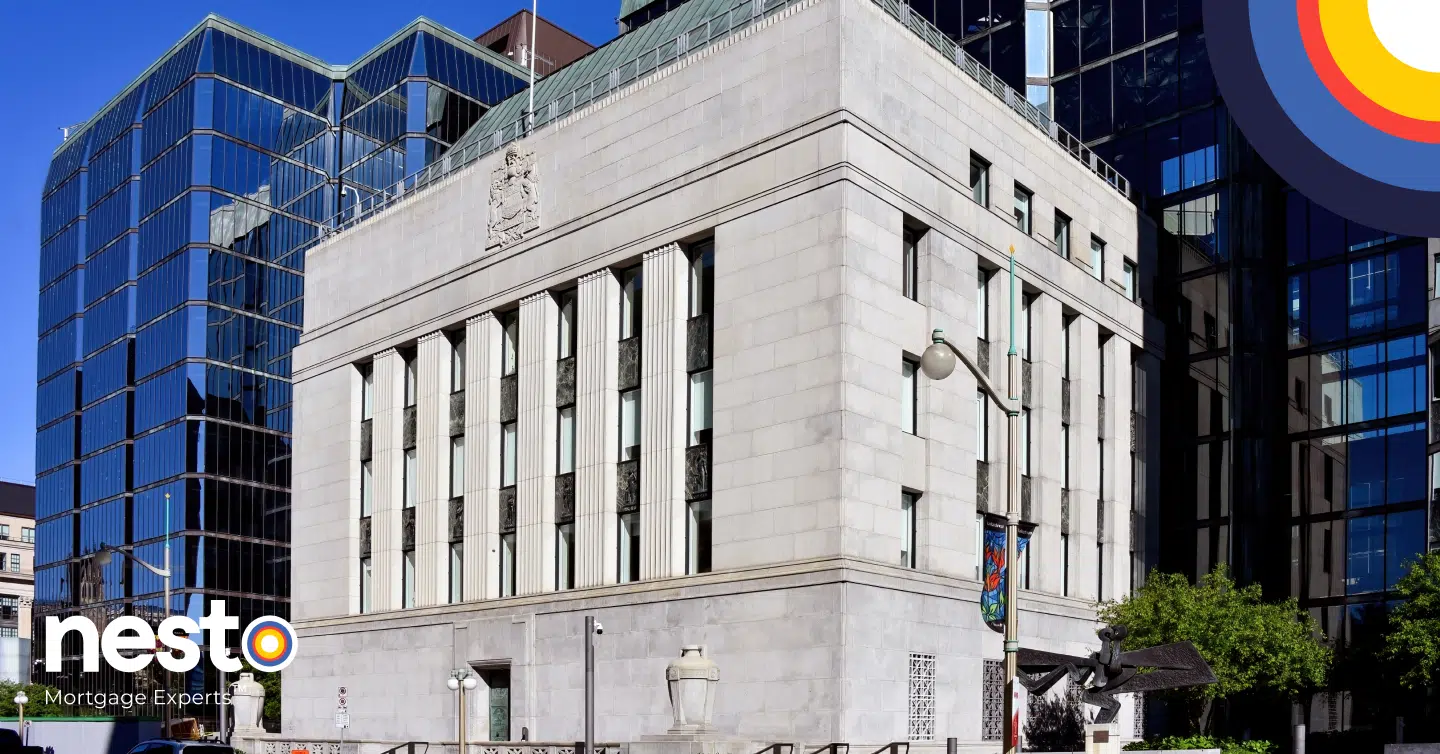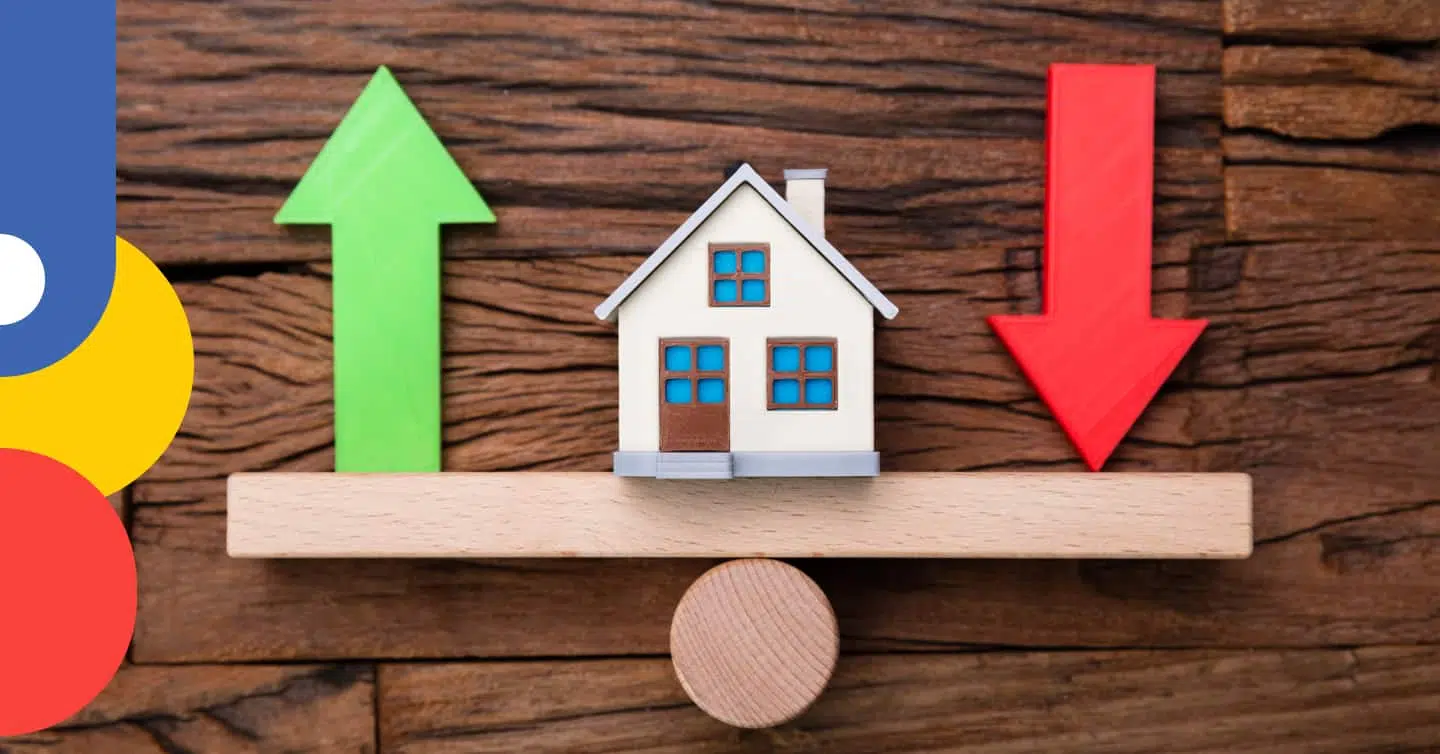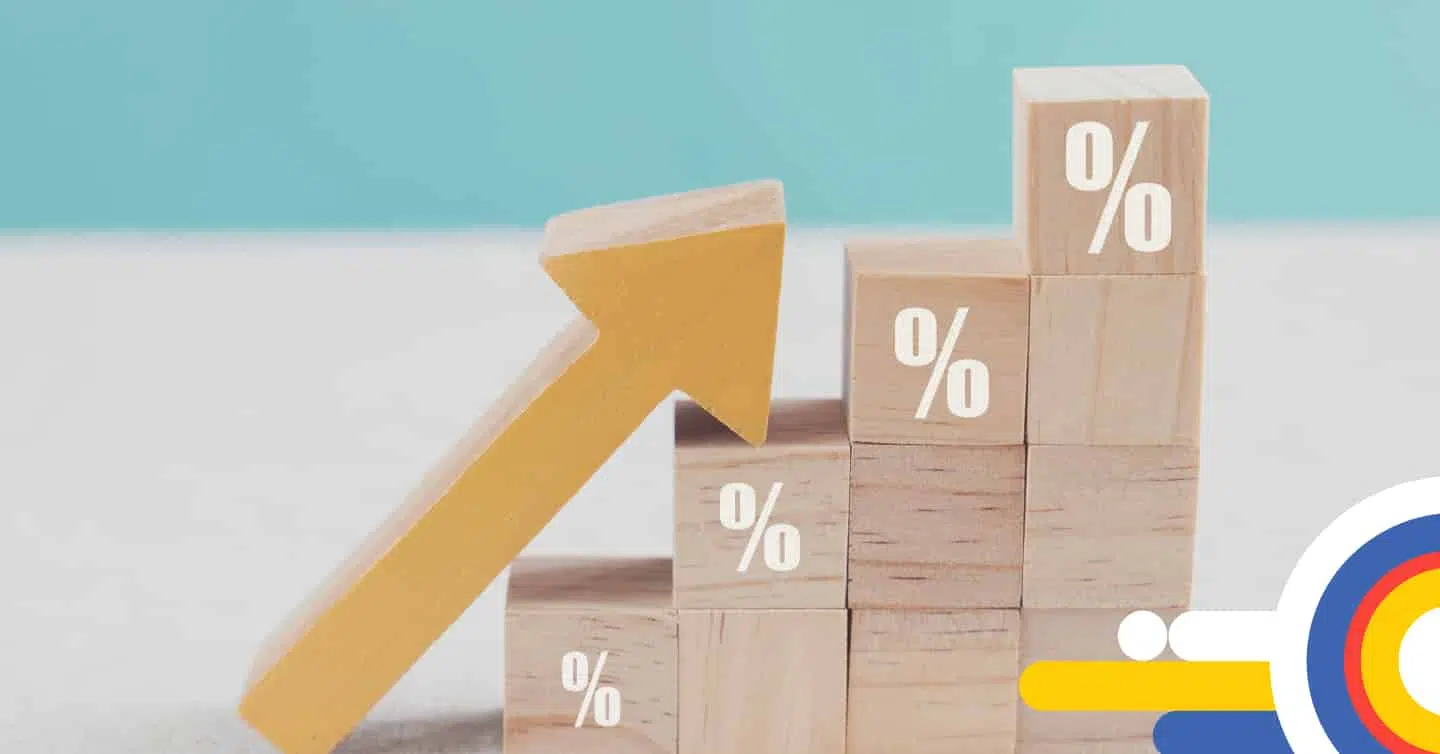Find the Best Mortgage
Rates in Prince Edward Island
Today’s Mortgage
No rates at the moment
*Insured loans. Other conditions apply. Rate in effect as of today.
Compare current mortgage rates in Prince Edward Island
Explore the latest mortgage rates in Prince Edward Island to find the best deal for financing or refinancing your dream home.
5-Year
Fixed Rate
3-Year Fixed Rate
5-Year
Variable Rate
3-Year
Variable Rate
Top Big
Bank Rates
The top big bank rates are all in one easy-to-view table. See their rates, then beat their rates (or get $500) with nesto’s low rate guarantee.
Are you a first-time buyer?
Province
Current Mortgage Rates in Prince Edward Island
As of Wednesday, April 16, 2025, current interest rates in Prince Edward Island are
High interest rates continue to make it challenging to qualify for a mortgage, making it harder for Prince Edward Island residents to afford a home. While it’s almost impossible to predict when rates will come down meaningfully, experts forecast that we should expect a gradual reduction over the next few years.
Home prices remain high, with CREA reporting that the national average home price decreased 2.1% year-over-year to $712,200 in February 2025.
What are today’s mortgage rates in Prince Edward Island?
The average 5-year fixed mortgage rate from big banks in Prince Edward Island is
The average 5-year variable mortgage rate from big banks in Prince Edward Island is
The average 3-year fixed mortgage rate from big banks in Prince Edward Island is
The average 3-year variable mortgage rate from big banks in Prince Edward Island is
Note: The average rate is calculated based on the posted rates of the six biggest lenders in Canada, which together make up over 70% of the retail mortgage market in the country. These six biggest lenders are the chartered banks Toronto-Dominion Canada Trust (TD), Royal Bank of Canada (RBC), Bank of Montréal (BMO), Bank of Nova Scotia (BNS), Canadian Imperial Bank of Commerce (CIBC), and National Bank of Canada (NBC).
What are the lowest mortgage rates in Prince Edward Island today?
The average 5-year fixed insurable mortgage rate in Prince Edward Island is currently
The average 5-year variable insurable mortgage rate in Prince Edward Island is currently
The average 3-year fixed insurable mortgage rate in Prince Edward Island is currently
The average 3-year variable insurable mortgage rate in Prince Edward Island is currently
The average 2-year fixed insurable mortgage rate in Prince Edward Island is currently
The average 4-year fixed insurable mortgage rate in Prince Edward Island is currently
The average 7-year fixed insurable mortgage rate in Prince Edward Island is currently
The average 10-year fixed insurable mortgage rate in Prince Edward Island is currently
Note: The average rate is calculated based on the posted rates of the six biggest lenders in Canada, which together make up over 70% of the retail mortgage market in the country. These six biggest lenders are the chartered banks Toronto-Dominion Canada Trust (TD), Royal Bank of Canada (RBC), Bank of Montréal (BMO), Bank of Nova Scotia (BNS), Canadian Imperial Bank of Commerce (CIBC), and National Bank of Canada (NBC).
What is today’s prime rate in Prince Edward Island?
The Bank of Canada prime rate in Prince Edward Island is currently
What are the average 5-year mortgage rates in Prince Edward Island?
The average 5-year fixed mortgage rate from big banks in Prince Edward Island is currently
The average 5-year variable mortgage rate from big banks in Prince Edward Island is currently
Note: The average rate is calculated based on the posted rates of the six biggest lenders in Canada, which together make up over 70% of the retail mortgage market in the country. These six biggest lenders are the chartered banks Toronto-Dominion Canada Trust (TD), Royal Bank of Canada (RBC), Bank of Montréal (BMO), Bank of Nova Scotia (BNS), Canadian Imperial Bank of Commerce (CIBC), and National Bank of Canada (NBC).
Prince Edward Island Mortgage Rate Trends: April 2025
While it’s difficult to predict where mortgage rates will trend, the consensus among experts suggests that we could see rates remain higher for longer. Forecasts suggest we won’t see interest rates return to the neutral rate range of 2 to 3% until the end of 2025.
Bank of Canada Rate Announcement
The latest Bank of Canada (BoC) announcement on April 16th was a policy interest rate hold, leaving the rate at
The BoC cited the need to maintain price stability for Canadians and the fact that monetary policy cannot resolve trade uncertainty or offset the impact of a trade war. The Governing Council will focus on ensuring price stability through supporting economic growth while ensuring that inflation remains controlled.
While inflation has eased, the growth in shelter costs, particularly rent and mortgage interest costs, is currently the most significant contributor to total inflation. The Governing Council continues to monitor core inflation numbers when assessing policy rate decisions to ensure sustained downward momentum in inflation.
The next announcement will be on June 4th. Using nesto’s proprietary overnight index swap and forward rate calculation data, bond markets are currently pricing a 50/50 probability of a 25 basis point cut.
Real Estate Market Update
On April 15th, the Canadian Real Estate Association (CREA) released its March home sales data. The data showed that home sales fell 4.8% compared to February, with the largest declines in Ontario and British Columbia. This sharp decline is attributed to buyers remaining on the sidelines as the trade war with the US and tariff uncertainty unfolds. Buyers appear to be waiting to make major financial decisions amid economic uncertainty.
March’s home sales activity reported that new listings increased 3% month-over-month to 165,800 properties. This is below the long-term average for this time of year.
CPI Inflation Update
Statistics Canada’s latest inflation data, released on April 16th, showed the Consumer Price Index (CPI) rose 2.3% year-over-year in March, up from 2.6% in February. March’s slowdown is attributed to lower prices for travel tours and gasoline. This was offset by the end of the temporary GST/HST break, which put upward price pressure on eligible products. Shelter continues to be the largest driver of inflation, up 3.9%.
Mortgage Statistics for Prince Edward Island
Home prices in Prince Edward Island remain well below the national average. However, home prices have more than doubled in the province in the last 10 years. Here are some mortgage statistics for the housing market in the province:
- Average home value (as of February 2025): $355,500 (CREA)
- Canadian homeownership rate (as of 2021): 66.5% (StatsCan)
- Number of home sales (as of February 2025): 178 (PEIREA)
- Number of new listings (as of February 2025): 370 (PEIREA)
Mortgage Options in Prince Edward Island
Prince Edward Island conventional mortgage: Conventional or uninsured mortgages require a 20% or more downpayment. Mortgage default insurance is not required on conventional mortgages, as the equity from your downpayment is enough to protect the lender. There is no maximum limit on the purchase price, allowing you to purchase homes valued at $1 million or more. With uninsured mortgages, you can extend the amortization to 30 years with prime lending.
Prince Edward Island high-ratio mortgage: High-ratio or insured mortgages allow you to purchase a home with less than 20% as a downpayment. Mortgage default insurance is required to reduce the lender’s risk if you default on the mortgage. Borrowers are limited to a purchase price of less than $1 million and an amortization of 25 years with insured mortgages.
Prince Edward Island fixed-rate mortgage: Fixed-rate mortgages lock in your interest rate for the term. This provides stable and predictable mortgage payments with a set principal and interest amount paid throughout the term. Penalties on fixed-rate mortgages are calculated based on the higher of the interest rate differential (IRD) or 3 months’ interest.
Prince Edward Island variable-rate mortgage: Variable-rate mortgages have interest rates that fluctuate based on the Bank of Canada policy rate, which impacts lender prime rates. Adjustable-rate mortgages (ARM) are variable mortgages that immediately adjust your mortgage payment to reflect your lenders’ prime rate. The principal portion remains fixed, while the interest can increase or decrease based on changes to the prime rate. Variable-rate mortgages (VRM) are variable mortgages that have fixed mortgage payments despite changes to your lenders’ prime rate. The principal and interest proportions will adjust with more going to interest and less to principal if the prime rate increases or more going to principal and less to interest if the prime rate decreases.
What Affects My Mortgage Rate in Prince Edward Island
Mortgage rates are determined based on the risks associated with the mortgage, the property used as collateral, and the borrower. The specific interest rate you are offered will be based on various personal factors like your credit score, income, capital, downpayment, loan purpose, and loan-to-value (LTV) ratio. Some of the most important determining factors affecting your mortgage rate include:
- Downpayment – Your downpayment determines your LTV ratio and whether you will be required to purchase mortgage default insurance. Insured and insurable mortgages have better rates as there is lower risk to the lender. These rates apply to properties valued at less than $1 million with amortizations up to 25 years.
- Amortization Period – With prime lending, the amortization period cannot exceed 30 years on uninsured mortgages with a downpayment of 20% or more. Uninsured mortgages typically have higher interest rates to account for the added risk to the lender. On mortgages with less than a 20% downpayment, the maximum allowable amortization is 25 years.
- Property Usage – Your primary residence, known as owner-occupied, generally has lower interest rates. Investment properties you intend to rent will typically have higher interest rates. Purchasing a primary residence with a second separate legally registered suite is considered an owner-occupied rental and will have access to the same rates as a primary residence.
- Mortgage Type – The type of mortgage will affect your mortgage rate. Open mortgages have higher rates due to their flexibility. Refinances have higher rates than renewals and new mortgages.
- Your Credit Score – Your credit score will determine the type of lender that approves you for a mortgage. If you have good to excellent credit, you can typically use prime lending and benefit from the best rates. If you have poor credit, you may need to look at alternative lending solutions with higher rates to offset the lender’s risks.
First-Time Home Buyer Programs in Prince Edward Island
- Down Payment Assistance Program (DPAP) – assists qualified residents who have modest incomes to purchase a first time. Financing is available in the form of an interest-free loan of up to 5% of the purchase price to a maximum loan amount of $17,500.
- Real Property Transfer Tax First-Time Home Buyers Exemption – As a first-time buyer, you may be exempt from paying the property transfer taxes. The amount payable may be waived if you meet the qualifying criteria as a first-time buyer.
- First-Time Homebuyers Tax Credit (HBTC) – a federal government program that allows first-time buyers to claim up to $10,000 for a maximum $1,500 tax credit to help offset closing costs.
Land Transfer Tax in Prince Edward Island
PEI has a Real Property Transfer Tax (RPTT) calculated based on the property’s purchase price. This tax is calculated based on 1% of the purchase price or the assessed value of the real property, whichever is greater.
How to Find the Best Mortgage Rate in Prince Edward Island
- Step 1: Understand your credit score: Before looking for a mortgage lender or applying for a mortgage, check your credit score regularly. This will help you immediately report and remedy errors that could negatively affect your score. If necessary, improve your credit score to help with your mortgage approval.
- Step 2: Determine your borrowing capacity: To find the right mortgage solution, you’ll need to know how much house you can afford based on your income and downpayment.
- Step 3: Know your mortgage needs: Analyze different mortgage solutions’ features, risks, and costs. Careful research and comparisons of the available options can help you choose a mortgage that best meets your immediate and long-term financial needs.
- Step 4: Find a suitable mortgage strategy: Get expert guidance to choose the best strategy for your homeownership goals. Your mortgage strategy shouldn’t just be based on the lowest rate.
- Step 5: Compare rates and terms: Not all mortgages are equal. Choosing a lender like nesto for your mortgage can help you compare rates and terms for multiple lending solutions, ensuring you find the best fit.
- Step 6: Get prequalified for a mortgage: Begin your journey towards homeownership by taking advantage of nesto’s prequalification process. By analyzing your downpayment and financial stability, nesto will provide you with a comprehensive prequalification outlining the maximum mortgage amount you can qualify for. This information is crucial as it helps you set realistic expectations and narrow your search for a suitable home within your budget.














